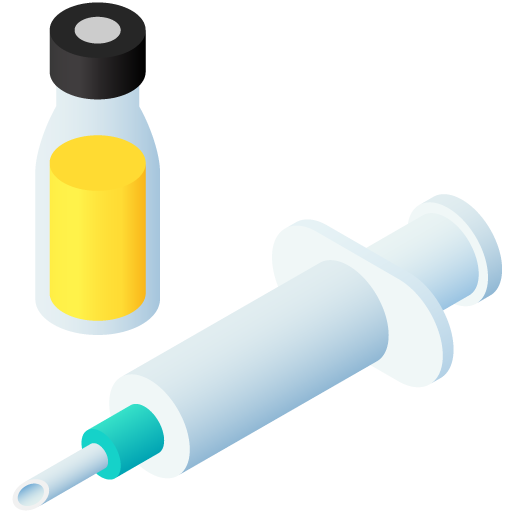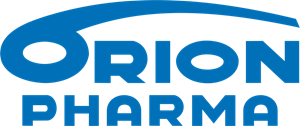Combination therapy
No results were found for your selected species
Progressis vet.
ATC code
Species
Pigs (sows and gilts).
Indications
Reduction of the reproductive disorders caused by Porcine Reproductive and Respiratory Syndrome virus (European strain) in a contaminated environment: vaccination reduces the number of early farrowings and the number of still-births.
Onset of immunity: has not been established
Duration of immunity: has not been established
Dose to be administered and administration route
White homogeneous emulsion for injection.
One dose of 2 ml is administered by deep intramuscular route, in the neck muscles behind the ear, according to the following vaccination scheme:
Primary vaccination:
Gilts:
2 injections 3-4 weeks apart, at least 3 weeks before mating.
Sows:
2 injections 3-4 weeks apart (vaccination of all the sows of the herd within a short period is recommended).
Revaccination:
One injection at 60-70 days of each gestation, as of the first gestation following the primary vaccination.
Shake well before use. Apply usual aseptic procedures. The use of a multi-dosing syringe is recommended.
Adverse reactions
Porcine
|
Very common (>1 animal / 10 animals treated): |
Elevated temperature 1 Injection site swelling 2 |
|
Uncommon (1 to 10 animals / 1,000 animals treated): |
Hypersensitivity reaction 3 |
1Increase in body temperature (average 1.3 °C, in individual pigs up to 2 °C) on the day of vaccination, which resolves within one day.
2A local injection site swelling up to 5cm in diameter, lasting up to three days. These reactions do not need further treatment.
3Immediate mild hypersensitivity-like reactions after vaccination, resulting in transient clinical signs such as vomiting.
4Serious anaphylactic-type reactions (shock, recumbency) which may be fatal. Such reactions require prompt symptomatic treatment.
Reporting adverse events is important. It allows continuous safety monitoring of a veterinary medicinal product. Reports should be sent, preferably via a veterinarian, to either the marketing authorisation holder or its local representative or the national competent authority via the national reporting system. See the package leaflet for respective contact details.
Dispensing
POM-V - Prescription Only Medicine – VeterinarianSUMMARY OF PRODUCT CHARACTERISITICS
1. NAME OF THE VETERINARY MEDICINAL PRODUCT
Progressis
Emulsion for injection for pigs (sows and gilts)
2. QUALITATIVE AND QUANTITATIVE COMPOSITION
Each 2-ml dose of vaccine contains:
Active substance:
Inactivated Porcine Reproductive and Respiratory Syndrome (PRRS) virus,
P120 strain ...................................................................................≥ 2.5 log 10 IF* units.
*IF units: ImmunoFluorescence antibody titre obtained after 2 injections in pigs under specific laboratory conditions.
Adjuvant:
O/w oily excipient (containing hydrogenated polyisobutene as adjuvant) q.s. 1 dose of 2 ml.
Excipient(s):
For a full list of excipients, see section 6.1.
3. PHARMACEUTICAL FORM
White homogeneous emulsion for injection.
4. CLINICAL PARTICULARS
4.1 Target species
Pigs (sows and gilts).
4.2 Indications for use, specifying the target species
Reduction of the reproductive disorders caused by Porcine Reproductive and Respiratory Syndrome virus (European strain) in a contaminated environment: vaccination reduces the number of early farrowings and the number of still-births.
4.3 Contraindications
None
4.4 Special warnings for each target species
In PRRS infected herds, viral infection is heterogeneous and varies over time. In such context, the implementation of a vaccination program is a tool to improve the reproductive parameters and may contribute to the disease control in conjunction with sanitary measures.
Vaccinate healthy animals only.
4.5 Special precautions for use
Special precautions for use in animals
Apply usual procedures for the handling of animals
Special precautions to be taken by the person administering the veterinary medicinal product to animals
To the user:
This product contains mineral oil. Accidental injection/self injection may result in severe pain and swelling, particularly if injected into a joint or finger, and in rare cases could result in the loss of the affected finger if prompt medical attention is not given.
If you are accidentally injected with this product, seek prompt medical advice even if only a very small amount is injected and take the package leaflet with you.
If pain persists for more than 12 hours after medical examination, seek medical advice again.
To the physician:
This product contains mineral oil. Even if small amounts have been injected, accidental injection with this product can cause intense swelling, which may, for example, result in ischaemic necrosis and even the loss of a digit. Expert, PROMPT, surgical attention is required and may necessitate early incision and irrigation of the injected area, especially where there is involvement of finger pulp or tendon.
4.6 Adverse reactions (frequency and seriousness)
Vaccination may induce a transient oedema (at most 3 cm) lasting generally less than one week and small local reaction (granulomas), without any effect on the health and the reproductive performance of the animal. Larger reactions (up to 7 cm diameter) have been observed occasionally after frequently repeated revaccinations. Vaccination may rarely cause hypersensitivity reactions. In such cases, an appropriate symptomatic treatment should be carried out.
The frequency of adverse reactions is defined using the following convention:
- very common (more than 1 in 10 animals treated displaying adverse reactions)
- common (more than 1 but less than 10 animals in 100 animals treated)
- uncommon (more than 1 but less than 10 animals in 1,000 animals treated)
- rare (more than 1 but less than 10 animals in 10,000 animals treated)
- very rare (less than 1 animal in 10,000 animals treated, including isolated reports).
4.7 Use during pregnancy, lactation or lay
Pregnancy and lactation:
Can be used during pregnancy and lactation.
4.8 Interaction with other medicinal products and other forms of interaction
Data are available which demonstrate that this vaccine can be administrated on a same day in a separate site, with inactivated vaccines against parvovirosis, influenza and Aujeszky’s disease as no adverse effect on the serological response has been observed. No information is available on the safety and efficacy of this vaccine when used with any other veterinary medicinal product except the products mentioned above. A decision to use this vaccine before or after any other veterinary medicinal product therefore needs to be made on a case by case basis.
4.9 Amounts to be administered and administration route
One dose of 2 ml is administered by deep intramuscular route, in the neck muscles behind the ear, according to the following vaccination scheme:
Primary vaccination:
Gilts:
2 injections 3-4 weeks apart, at least 3 weeks before mating.
Sows:
2 injections 3-4 weeks apart (vaccination of all the sows of the herd within a short period is recommended).
Revaccination:
One injection at 60-70 days of each gestation, as of the first gestation following the primary vaccination.
Apply usual aseptic procedures. The use of a multi-dosing syringe is recommended.
4.10 Overdose (symptoms, emergency procedures, antidotes), if necessary
After administration of a double dose, no adverse reactions other than those described in section 4.6 were observed.
4.11 Withdrawal period(s)
Zero days.
5. IMMUNOLOGICAL PROPERTIES
Pharmacotherapeutic group: Immunologicals for suidae / Inactivated viral vaccines / porcine reproductive and respiratory syndrome (PRRS) virus. ATCvet code: QI09AA05
The vaccine contains inactivated PRRS virus in an oily adjuvant. It is intended to stimulate immunity against PRRS virus. The efficacy was demonstrated under field conditions during field trials. Whereas no effector immunomechanism on protection has been shown, the uptake of the vaccine has been demonstrated by the production of specific anti-PRRS IFA antibodies in vaccinated animals.
6. PHARMACEUTICAL PARTICULARS
6.1 List of excipients
Hydrogenated polyisobutene
Polyoxyethylene fatty acids
Ether of fatty alcohols and of polyols
Benzyl alcohol
Triethanolamine
Potassium chloride
Sodium chloride
Potassium dihydrogen phosphate
Disodium phosphate dihydrate
Magnesium chloride
Calcium chloride
Water for injections
6.2 Major incompatibilities
Do not mix with any other veterinary medicinal product.
6.3 Shelf life
Shelf-life of the veterinary medicinal product as packaged for sale: 18 months. Shelf life after first opening the vial: use immediately after opening.
6.4 Special precautions for storage
Store in a refrigerator (2 °C – 8 °C).
Do not freeze.
Protect from light.
6.5 Nature and composition of immediate packaging
Nature of primary packaging elements:
- Type I glass bottle, LDPE bottle
- Nitril elastomer closure
- Aluminium cap
Packaging intended for sale:
- Box of 1 bottle of 5 doses / 10 ml glass bottle
- Box of 10 bottles of 5 doses / 10 ml glass bottle
- Box of 1 bottle of 10 doses / 20 ml glass bottle
- Box of 10 bottles of 10 doses / 20 ml glass bottle
- Box of 1 bottle of 25 doses / 50 ml glass bottle
- Box of 10 bottles of 25 doses / 50 ml glass bottle
- Box of 1 bottle of 50 doses / 100 ml LDPE bottle
- Box of 10 bottles of 50 doses / 100 ml LDPE bottle
Not all pack sizes may be marketed.
6.6 Special precautions for the disposal of unused veterinary medicinal product or waste materials derived from the use of such products
Any unused veterinary medicinal product or waste materials derived from such veterinary medicinal product should be disposed of in accordance with local requirements.
7. MARKETING AUTHORISATION HOLDER
Ceva Animal Health Ltd
Explorer House
Mercury Park
Wycombe Lane
Wooburn Green
High Wycombe
Buckinghamshire
HP10 0HH
United Kingdom
8. MARKETING AUTHORISATION NUMBER
Vm 15052/4150
9. DATE OF FIRST AUTHORISATION
21 September 2000
10. DATE OF REVISION OF THE TEXT
October 2022

Approved: 12 October 2022

| Art. Nr. | 15052/5054 |
|---|---|
| EAN | 3411113050696 |
 TRUSTED SOURCE
TRUSTED SOURCE








